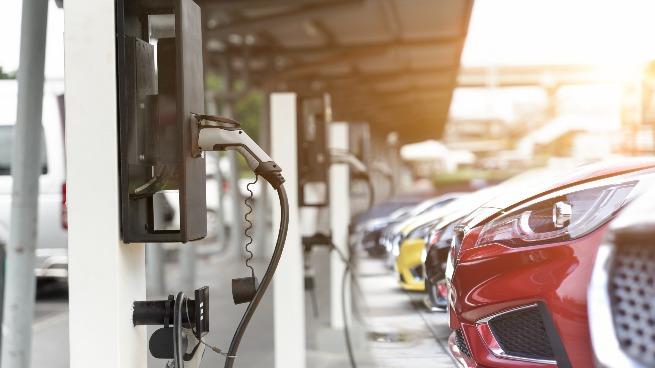{{item.title}}
{{item.text}}

{{item.text}}
As electric vehicle (EV) adoption rates rise across the United States, power and utilities will face additional demand requiring proactive moves to reduce grid and capacity impact. The US grid should be able to handle the increases through the next two decades according to a PwC analysis of projected EV growth and capacity needs. But there’s a caveat. Electric providers should consider measures to shift or spread out EV charging to reduce periods of peak demand that could stress grids in areas known for fast-rising EV adoption as well as other emerging growth areas across the country.
Many utilities already have initiatives focused on managing or learning from today’s EV charging. To help further these efforts, we analyzed how charging could shift in the coming years to ease capacity constraints and create other benefits for your business as well as your customers, EV prosumers and other stakeholders. Building a successful strategy to manage EV charging could help power and utilities find new revenue growth opportunities, enhance reliability, facilitate grid modernization and reduce the need for new peak generation.
Government programs intended to increase EV production and encourage consumers to adopt EVs are among many factors expected to move the nation further into an era of coast-to-coast EV growth. There could be 92 million EVs on the road in the US by 2040 based on a PwC analysis — 20 times more than the estimated 4.5 million EVs in 2023.
The impact of EV charging on the national grid over the next two decades could be significant yet manageable with the right planning and control measures. According to our projections, the average total annual EV load in the US could rise from an estimated 24,000 GWh in 2023 to 468,000 GWh by 2040. That’s an 1850% increase or about as much as the total electricity generated annually in Texas. This anticipated EV load could account for 9% to 12% of the projected US grid capacity, which is under the current reserve margins, but still at levels that may factor heavily into load demand and generation needs. While the growth in some parts of the country will likely outpace other areas, every service territory across the US is expected to see significant load increases.
Meanwhile, the number of charge points is expected to climb to 58 million by 2040 from about four million in 2023, according to our analysis. Residential charging is forecast to be among the fastest-growing charging segments, accounting for 29% of the total, followed by charging at work, on-the-go charging and others. Also, there are signs that fleet charging could be on the rise. A 2023 PwC survey of large commercial and industrial (C&I) customers found that 56% of those surveyed have already begun electrifying fleets, with another 30% expecting to start within the next two years. As such, utilities should closely monitor emerging customer needs and societal trends that could either expand or contract the growth of certain segments. For instance, infrastructure needs could change near large companies and corporate parks or charging needs could shift even more from work to home if the remote-work trends persist.
Behind all this EV growth is an industry-wide cleaner energy transition that may become an important factor in how power and utilities manage increasing energy needs. There’s an opportunity to strategically deploy more affordable or available cleaner power generation, moving away from more carbon-intensive sources. Companies that operate in areas with strong renewable growth, for instance, may be able to shift EV load toward hours of the highest solar generation and away from the late afternoon and evening, when residential EV charging now typically occurs. Our analysis indicates that utilities could reasonably shift the average daily EV load to more optimal times if most EVs across all charging types participated in time-of-use (TOU) rates or other incentives intended to shift charging windows. Aggregating controllable EV load as a “virtual” generation asset can be used for long-term capacity planning as a low-cost, low-carbon alternative to building new generation. The most beneficial load shift and charging profile may look different based on the energy mix of each utility, with programs tailored to the most efficient and available generation across service areas.
Utilities may want to look closely at California, a pioneer in EV and solar adoption. According to public data, nearly 40% of all EV car registrations in the US were from California as of 2021. Solar accounted for 20% of the state’s total energy generation in 2022. Based on a PwC analysis, aligning EV charging demand in California with renewable energy availability could help to reduce current timing imbalances between peak demand and solar power generation, commonly referred to as the California duck curve.
With properly designed TOUs and other incentives, the state could shift as much as 41 GWhs of daily load to more optimal times by 2040. The amount of power delivered to EVs would remain the same, but the utility grid could have more flexibility to address other supply and demand constraints. In addition to grid stability, utilities in California and elsewhere could reduce the need to activate (or even build) new generation. Unlocking these benefits requires more advanced forecasting and operational planning capabilities, including the use of more granular load data and digital tools to understand peak loads.
Source: PwC Strategy& analysis of California’s projected possible daily EV load shift (GW) in 2040
Because EV penetration and generation sources vary from one state or service territory to another, charging programs and incentives should be tailored to the specific needs of customers. Asking these key questions now will help build effective programs as well as a smoother and more manageable path forward.
Sam McBride and Konstantinos Siokos contributed analysis and research to this report.
{{item.text}}

{{item.text}}
